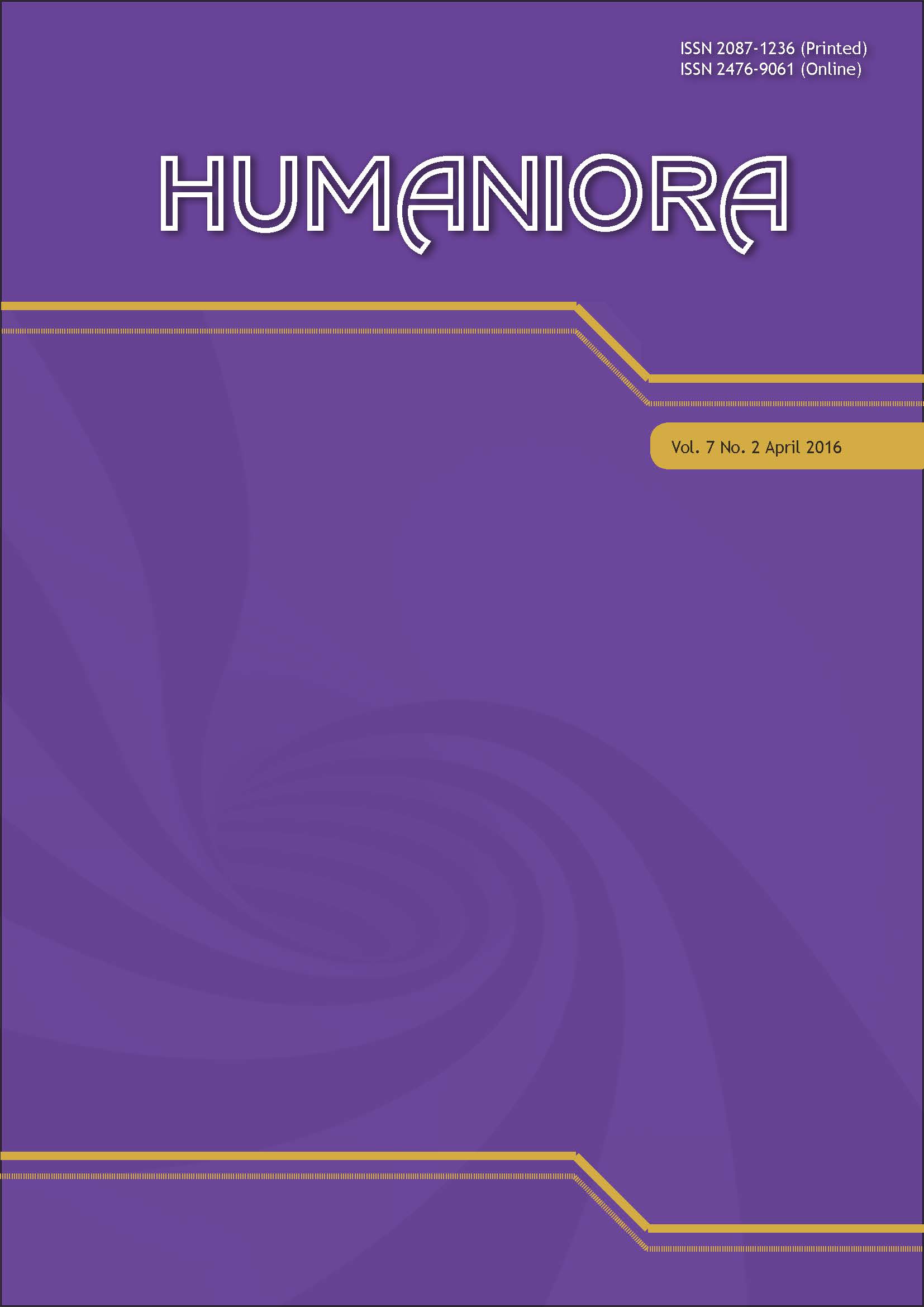Papua in Media: A Discourse Critical Analysis of Economic News in Three National Indonesian Newspapers
DOI:
https://doi.org/10.21512/humaniora.v7i2.3525Keywords:
Papuan conflict, political economic, political communication, media farming, critical discourse analysis, social construct, mass media.Abstract
For so many years, peace in Papua has become a high critical thing in Indonesian politics. In order to find the solution, the paradigm has been shifted from security to welfare or economic approach. Article explored the impact of religion affiliation toward news making and news frame, especially in economic news published by mass media. This research was developed to explore the framing formed by three media outlets which each of them affiliated with certain religion. This research focused on the analysis of economic articles published by three media outlets; Sinar Harapan, Republika, and Kompas daily. The method of framing analysis was based on Robert N. Entman theory, while the critical discourse analysis method was based on Norman Fairclough theory. Political economics theories such as Vincent Mosco, Robert E. Babe, and D.W. Smythe to analyze the influence of religion affiliation in news production were also used. Meanwhile, some political communication theories such as Brian McNair, Dann Nimmo, Noam Chomsky and Denis McQuail were also used to know how media stands in Papua conflict. From the research, it is discovered that the religion affiliation has a big impact on news media and its content, and also the frame that is built. Not only political-economic matters, but "the-sense-of-belonging" of the owner through particular religion gives impact to media policy. The content and frame are finally influencing political communication in Indonesia in Papua conflict particularly.
Â
References
Berger, P. L., & Luckmann, T. (1966). The Social Construction of Reality: A Treatise in the Sociology of Knowledge. Garden City, NY: Doubleday.
Denton, R. E., & Woodward, G. C. (1990). Political Communication in America. New York: Praeger.
Drooglever, P. J. (2010). Suatu Penentuan Pendapat Rakyat (Pepera). Dipresentasikan dalam Seminar on the Act of Free Choice. Page 129-147. Oxford.
Entman, R. (1991). â€Framing US Coverage of International News: Contrast Narrative of the KAL and Iran Air Incidentâ€. In Eriyanto. AnalisisFraming: Konstruksi, Ideologi dan Politik Media. Yogyakarta: LKiS.
Eriyanto. (2001). Analisis Wacana: Pengantar Analisis Teks Media. Yogyakarta: LKiS.
Eriyanto. (2002). Analisis Framing:Konstruksi, Ideologi dan Politik Media. Yogyakarta: LKiS.
McNair, B. (2003). An Introduction to Political Communication (3rd Ed.). New York: Routledge.
Mosco, V. (1996). The Political Economy of Communication: Rethinking and Renewal. London: Sage.
Purwanto, W. H. (2011). Papua in 100 Forthcoming Years. Jakarta: CMB Press.
Sherlita, W. (2004). Isu NKRI dalam Tajuk Rencana Perstentang Konflik Bersenjata di Aceh (Analisis Framing Tiga Harian Ibukota). (Unpublished Bachelor Thesis). Universitas Indonesia: Depok.
Tebay, N. (2011). Dialog Jakarta – Papua, Sebuah Perspektif Papua. Jayapura: SKP.
Widjojo, M. S., Elizabeth, A., Rahab, A., Pamungkas, C., & Rosita, D. (2008). Papua Road Map: Negotiating the Past, Improving the Present and Securing the Future. LIPI: Jakarta.
Woodier, J. (2008). The Media and Political Change in Southeast Asia. UK: Edward Elgar Publishing Limited.
Downloads
Published
How to Cite
Issue
Section
License
Authors who publish with this journal agree to the following terms:
a. Authors retain copyright and grant the journal right of first publication with the work simultaneously licensed under a Creative Commons Attribution License - Share Alike that allows others to share the work with an acknowledgment of the work's authorship and initial publication in this journal.
b. Authors are able to enter into separate, additional contractual arrangements for the non-exclusive distribution of the journal's published version of the work (e.g., post it to an institutional repository or publish it in a book), with an acknowledgment of its initial publication in this journal.
c. Authors are permitted and encouraged to post their work online (e.g., in institutional repositories or on their website) prior to and during the submission process, as it can lead to productive exchanges, as well as earlier and greater citation of published work.
USER RIGHTS
All articles published Open Access will be immediately and permanently free for everyone to read and download. We are continuously working with our author communities to select the best choice of license options, currently being defined for this journal as follows: Creative Commons Attribution-Share Alike (CC BY-SA)




















